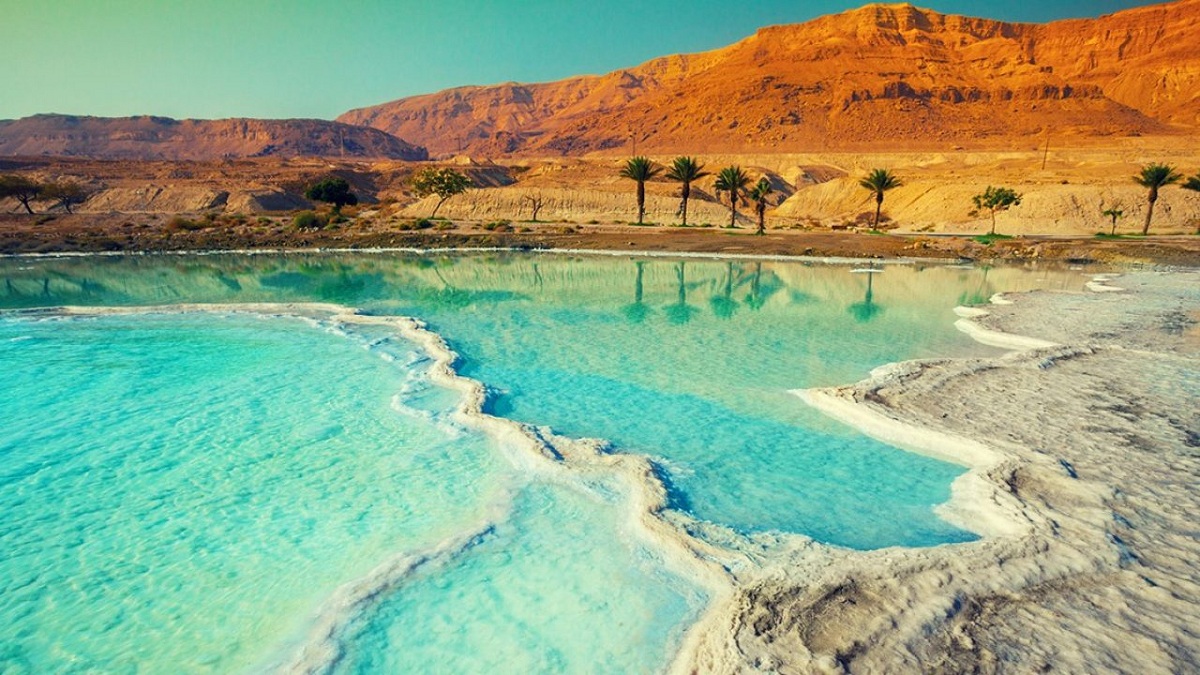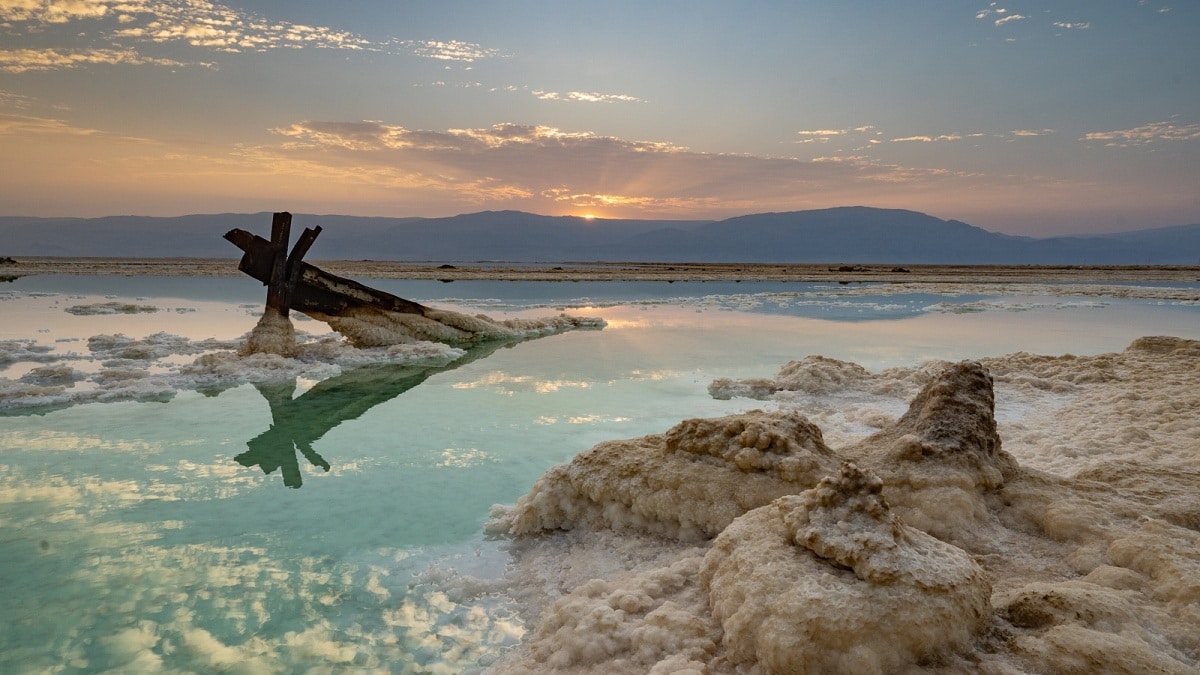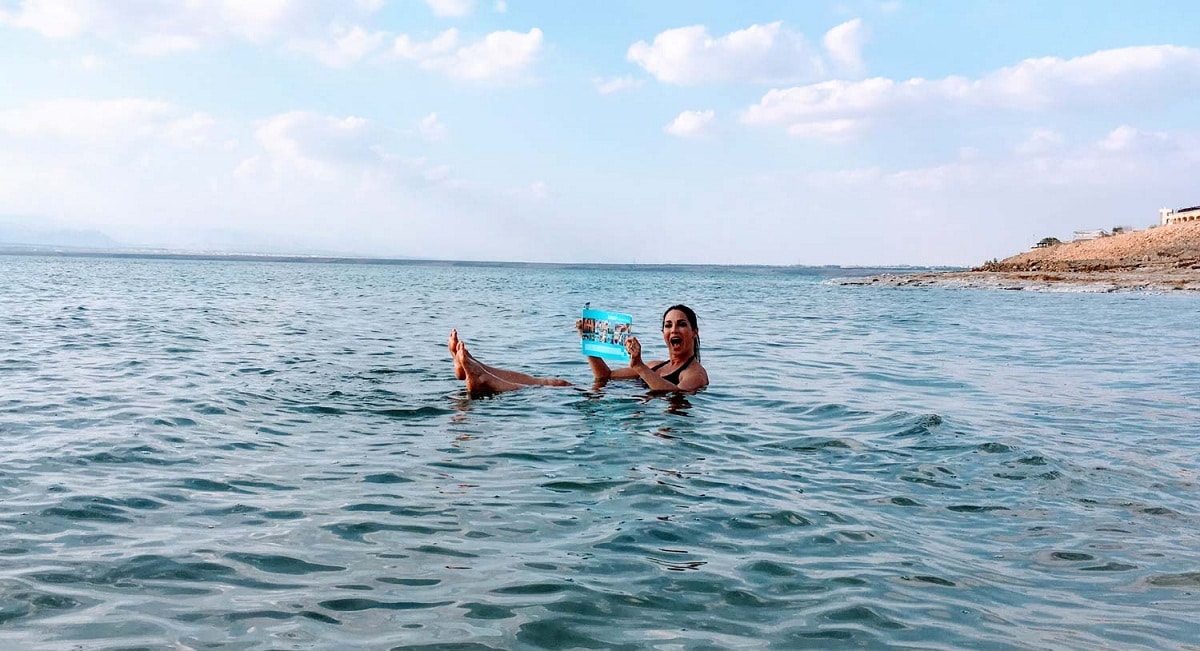
One of the most famous seas in the world for its particularity is the Dead Sea. It is famous for several reasons. The first is its high amount of salt. This makes life in its waters unable to develop and favors that the rest of the objects can float in it. It is also often known as it is mentioned in various passages in the Bible. Although it is called by the name of the sea, it is an endorheic lake that does not have any kind of outlet.
In this article we are going to tell you about all the characteristics, geology and curiosities of the Dead Sea.
Key features

The Dead Sea is an endorheic lake that is completely surrounded by land without any type of exit from the water to an open space. That is to say, It is a hypersaline lake with a high concentration of salts that exceeds that of any type of sea or ocean. It is located on the borders of Jordan, Israel and the West Bank. It is located at a depth of about 400 meters below sea level. This may be one of the reasons why it has such a high concentration of salt.
If we look at it from the perspective, we can see that the Dead Sea is one of the lowest points on earth. That is, it is the lowest body of water of all. It is divided into two basins that are separated by a land bridge. As a whole they sit on a depression created by a crack or fault known as the Jordan Valley. This is situated between the Judean Hills and the Transjordan Plateau
The northern part of the Dead Sea is the largest and deepest. TIt has a length of about 50 kilometers and reaches up to 400 meters deep. The southern basin, on the other hand, is only 11 kilometers long and only 4 meters deep. The only river that flows into this lake is the Jordan River. It is the only continuous water tributary that this sea has. It usually discharges a large amount of fresh water, especially in the northern basin.
In the southern part it is usually fed with water from several streams. But it is not a significant contribution. This means that the level of the Dead Sea does not fluctuate throughout the year. The large amount of salt they have amounts to values of 340 grams per liter. One of the factors that promotes the large amount of salt is that the amount of fresh water it receives is less than the amount of water that evaporates.
In this case, we have very high seawater evaporation. This is due to the fact that it is located in an area with high temperatures and little rainfall. The salts found in this water are sodium chloride, magnesium chlorine, calcium chloride, potassium chloride, and magnesium bromide. It can be said that approximately 27% of the water in this sea is made up of solid substances.
Formation of the dead sea

As we mentioned before, the Dead Sea is situated on a rift valley. That is, it is a depression that is bordered by faults parallel to each other. This fault extends throughout the entire African and Arabian tectonic plate. Before this pit will be created, the Mediterranean Sea was more extensive than now. It came to occupy all roads and Palestine during the jurassic period and cretaceous. However, in the Miocene the Arabian plate collided with the northern part of the Eurasian plate. This is how the earth began to rise and the central mountain range of Palestine was formed. Little by little, over the years, the rift valley was gradually formed and filled with seawater.
Already in the Pleistocene, there was a large amount of land between the Mediterranean and the valley that was formed because of the crack between the tectonic plates. It was possible to raise several meters until the sea water was withdrawn. This caused the pit and the waters to be isolated. The Gulf of Aqaba was also isolated.
Biodiversity of the Dead Sea

As we have mentioned before, the salinity of the Dead Sea is very high. It becomes about 10 times the salinity of the ocean. This makes it practically a marine desert in which only some living beings are capable of inhabiting it. The only living beings capable of surviving in these extreme conditions are bacteria, protozoa, and single-celled algae.
Most of these algae belong to the genus Dunaliella. However, along the entire coastline of the Dead Sea we can find some halophyte plants. These plants are those that are adapted to soils with high concentrations of salinity or alkalinity. On the contrary, we cannot find any type of fish, reptiles, amphibians and much less mammals. On some occasions, some fish are dragged in the river currents and end up dying without any chance of survival.
For this reason, one cannot speak of biodiversity when we refer to the Dead Sea. However, it does not mean that this sea does not possess valuable resources. Thanks to its large amount of salinity, its salts can be extracted for therapeutic purposes. You can also apply the mud that is on the seabed in the body since it has great beneficial properties with its minerals.
Threats
Although this sea does not suffer from overexploitation of fishing, its size and volume has been reducing during the last decades. This is mainly due to the fact that the waters are diverted and there are large subsidences of land that cause some areas of the surroundings to end up collapsing. Since 1960 there has been a reduction in the total water volume. This began to happen when Israel established a pumping station on the shores of the Sea of Galilee. This pumping station caused the waters of the Jordan River to be diverted to other countries that used it to be able to supply and irrigate crops.
By diverting a large amount of water from its main tributary and having a large amount of evaporation, it is causing the volume of water in this sea to be less and less. The waters are reducing about 1 meter per year.
I hope that with this information you can learn more about the Dead Sea.